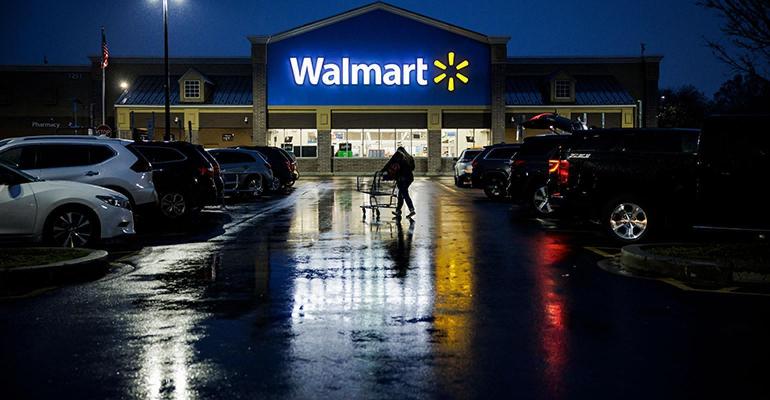Competing against Walmart online will only get tougher for regional grocers, as Walmart continues to ramp up its low pricing engine, according to research from grocery ecommerce software company Mercatus.
The new report forecasts a daunting scenario. Walmart, which already enjoys a 15% price advantage online on a large basket of groceries in the U.S., does not have to rely on service fees to support pickup operations and produces eight times more revenue online than regional competitors, the report states.
With automation continuing to lower the cost of fulfilling orders, Mercatus forecasts that Walmart retail media revenue will increase at a minimum of 20% in the coming years.
The report, however, believes regional stores are well-positioned to deal with the new pricing paradigm shift.
Last year, Mercatus research indicated that four in 10 customers said that a regional store was their primary grocery store due to the store being closest to their home. Meanwhile, over half of Walmart’s loyal shoppers drive past two or more rival stores to shop at a Walmart. Location makes a difference with online shopping because many shoppers pick up their orders, the research from that time found.
Key takeaways from the new report, “Pricing’s Potential Roles for Improving Online Grocery Performance for Regional Grocers” includes:
- How accurately shoppers perceive online vs. in-store prices
- How various elements of pricing affected repeat intent
- How many shoppers viewed a weekly ad before placing online orders.
The report also suggests that grocers lean into a flexible fee system based on when shoppers want to receive online orders. This allows the retailer to save on labor by batching orders during the fulfillment process.
The report also points to a framework developed by retail consultant Brick Meets Click that allows grocers to use service fees and retail media revenue to offset the cost of online orders. Retailers can also improve efficiencies, like bundling more, before determining a price premium for online products, the report states.
“A key takeaway of this research initiative is that regional grocers need to consider pursuing a different path forward for online pricing because they typically have less ability to cover the incremental costs of these value-added services than Walmart,” said Sylvain Perrier, president and CEO of Mercatus. “We recognize that grocers may view pricing as a third-rail topic, but the rationale and evidence for adopting a new online pricing paradigm continues to strengthen, and we want to help grocers navigate how they adapt to these competitive realities.”





